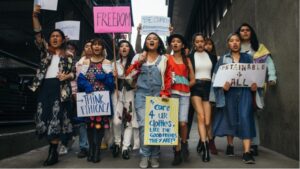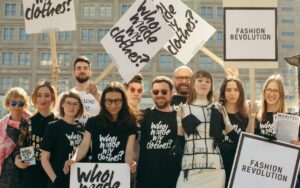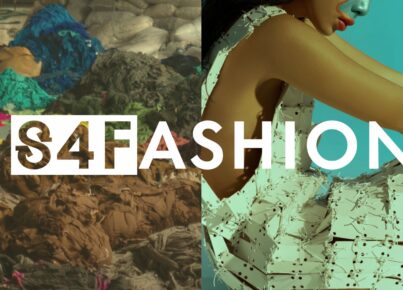Assign blame is not the same as trying to find out who’s responsible for a certain phenomenon. Blaming someone carries a symbolic burden that, although it’s justified and unavoidable in some cases, contributes to generating an atmosphere of animosity and enmity that complicates taking common decisions aimed at reaching agreements. However, holding a specific agent accountable for action or effect can help us understand why a decision is made, its possible consequences, and give us essential information to correct it, knowing where to allocate resources and energy.
It is clear that the irruption of fast fashion materialized in large corporations and huge business tycoons, has meant a before and after in a system that, in recent decades, has not ceased to be subject to countless changes and unprecedented transformations. But is this system a response to customers’ needs, or is its appearance the trigger for a new mindset on the part of consumers? Blaming one of the two parties for the fatal effects that this way of making and understanding fashion, based on huge amounts of waste, the lack of environmental and social ethics and economies of scale, it’s not worth it.
However, trying to find out who is responsible for this unprecedented phenomenon can be very helpful. And the truth is that it is neither one nor the other. We could say that fast fashion is the result of a set of events and characteristics that, together with a generational change and endless advances in globalization, technology and distribution, made fashion extremely democratic. Much closer to an audience that demanded lower prices and a greater supply of products, but much more distant from the ecosystem that provides this and many other sectors with essential raw materials, which now run the risk of disappearing.
It is impossible to avoid talking about the economic component as a fundamental factor of these models that, although they are far from how the luxury market understands fashion, have also seen in these new possibilities a way to increase and consolidate their profit margins. Producing costs much less, strictly numerically speaking, and generating waste seems to have no cost. In fact, it is much cheaper to discard everything that is considered useless, than to give it a second life or try to find alternatives where they can be used, thus reducing the environmental impact and contributing to generate a much more responsible model.


So, if big brands seem to have found in this aggressive and maximalist model their economic panacea, who should take the first step to change the foundations on which the fashion industry is built? The end customers. We have been led to believe for a long time that clients are the last link in a chain conceived and created by a group of powerful agents with the ability to decide what to do and what not to do, but it is a fallacy. We, as consumers, have the power to decide which brands, projects or initiatives goes ahead and are consolidated in the market, through our acts and decisions as a consequence of a process, conscious and unconscious, of internal reflection and debate. And in the same way, we are capable of redefining the pillars of the models already established, leading them towards forms of production that are much more connected to the reality and needs of the world in which we live.
Why are there brands included in the fast fashion segment that are now committed to sustainability, at least apparently, in the form of collaborations with designers known for reducing resources to a minimum or projects that have been seeking solutions to the prevailing overproduction in today’s world for years? Because they have realized that society is increasingly aware that the model implemented, and from which they have made the most of in recent years, has no future. Circularity begins to consolidate as a fundamental value in the minds of consumers, capable of destroying or exponentially raising a brand. And while there are still many steps to be taken, materializing the discourse and the image that is being projected in real and permanent changes over time, there is no doubt we are on the right track.

Synergies between creatives, projects and companies can help implement circular fashion models in a system. On the one hand, those for whom this way of understanding and making fashion is indisputable, and whose initiatives were created from the beginning on this pillar. On the other hand, agents capable of bringing these models closer to the large market, finding a balance in which the needs of all the parties involved are satisfied, and taking advantage of their productive, economic and influencing capacities to consolidate the changes little by little. There are no culprits, but responsible ones capable of making fashion (and the world) a better place.
By David Alarcón Castejón
Profesión: Editor de moda freelance & PR
CV: Graduado en Marketing y después de haber colaborado con distintas revistas independientes, nacionales e internacionales, como Vein Magazine, Fucking Young! o Herdes, David Alarcón trabaja actualmente como online content editor de la cabecera internacional Metal Magazine en Madrid, además de ser responsable de comunicación y prensa de la firma de moda emergente Marlo Studio. Habiendo publicado en Vanity Teen, Kluid Magazine o Wag1 Magazine, conduce su propia sección en el podcast La Moda Que Nos Parió.











